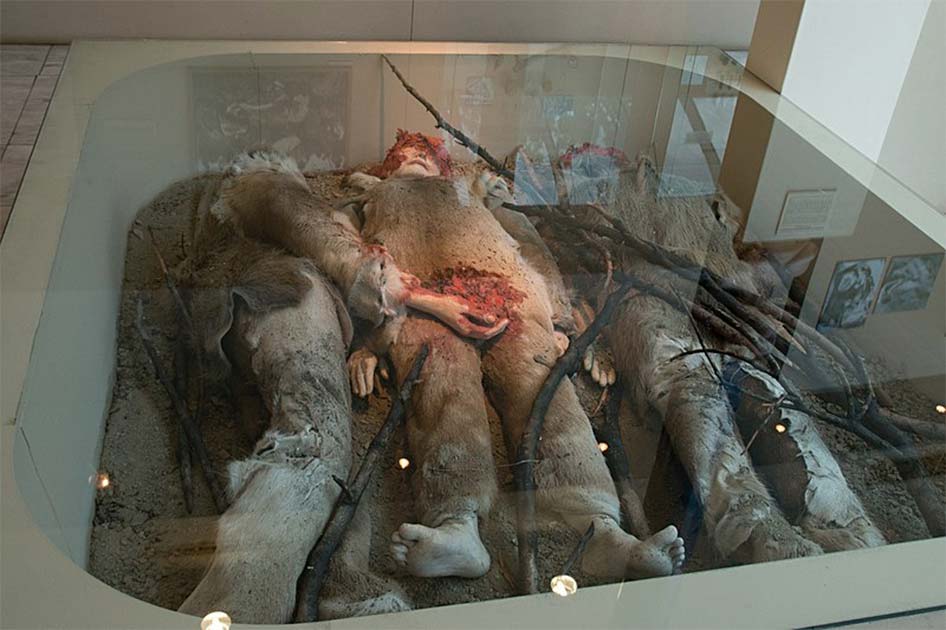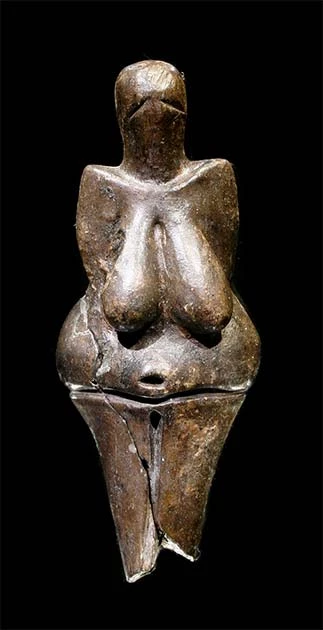28,000 years ago, the bodies of three adolescents were interred together near a settlement named Dolni Vestonice in the Moravian region of Czechia. The corpses had been arranged in a peculiar manner, with one body facing downwards, while another was positioned with a hand covering the middle skeleton’s pelvis, coated with red ochre. What could this arrangement possibly signify?
Dolni Vestonice is an archaeological site from the Upper Paleolithic period, located in proximity to the present-day city of Brno in Moravia, situated in the eastern portion of the modern-day Czech Republic. Radiocarbon dating of human remains and charcoal unearthed from the site suggests an occupation date from approximately 30,000 years ago.
Dolni Vestonice has yielded a wealth of information about Upper Paleolithic life in that geographic area, as it has been the source of numerous archaeologically significant discoveries. Among these are remnants of kilns, many ceramic figurines, evidence of dwellings, and several burials, including the mysterious “Triple Burial”. These burials offer a glimpse into the death rites of the Upper Paleolithic inhabitants of this region.

The first mention of Dolni Vestonice dates back to 1922, with substantial excavation carried out in the first half of the 20th century. A salvage operation in 1980 led to a second excavation, during which the Triple Burial was uncovered.
Following its discovery, a specialist was called in, and the remains were carefully removed. Studies of the skeletons suggested they belonged to adolescents. Of the three individuals, two were identified as male, while the third has traditionally been classified as female.
Layout of the Burial
The presumed female skeleton was located between the two males. Examination of her bones revealed a significant curvature of the spine to the left and several other skeletal irregularities, suggesting she may have been disabled. The two males, by contrast, appeared to have been physically robust and likely died in their prime years.
The bodies’ orientation was notably atypical, especially the male on the left, whose hands were placed on the middle skeleton’s ochre-covered pelvis. This individual lay supine, his face turned towards the female. The male on the right lay prone, his face turned away from the female, yet his left arm was linked with hers.
Regarding funerary objects, both males were reported to have necklaces made from canine teeth and ivory around their heads. Furthermore, the male on the left seemed to have worn a painted mask.
Red ochre was also found applied to the heads of all three individuals. Perhaps the most perplexing find was a thick wooden stake found impaled through the left male’s coccyx and hip, implying a violent or unnatural death.
Interpretations of the Mysterious Burial
Since the burial’s discovery, various theories have been proposed to explain it. One posits that the female may have died during childbirth, with the male on the left acting as a medicine-man (suggested by his mask) and the other male as her spouse.
- The Bodies of Stonehenge: Britain’s Largest Ancient Cemetery?
- Cucuteni Trypillia: Why Did These Ancient Europeans Burn Their Homes?
Held accountable for her death, they may have joined her in her grave. Another hypothesis proposes that the skeletons might represent a young queen and her two consorts. This would explain the age and health differences.
A further interpretation assumes acceptance of homosexuality in Dolni Vestonice society. This theory proposes that the middle individual was actually a male involved in a homosexual relationship with the male on the right.

This theory suggests that the male on the left may have humiliated the middle individual for some reason, driving him to suicide. Subsequently, the male on the right takes his own life out of despair, and finally, the community executes the male on the left for his actions.
Despite numerous theories, the intriguing triple burial from the Ice Age remains a mystery. The motivations and intentions of the ancient inhabitants of Dolni Vestonice when they performed this unique burial over 25,000 years ago can only be the subject of speculation for modern researchers.
Top image: Burial position of the 3 individuals at Dolni Vestonice. Source: Alissa Mittnik, Chuan-Chao Wang, Jiří Svoboda, Johannes Krause, / CC BY 4.0.
By Wu Mingren